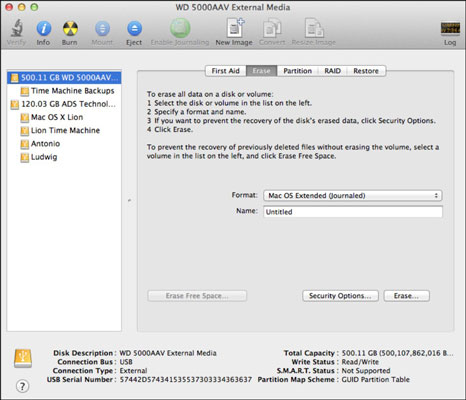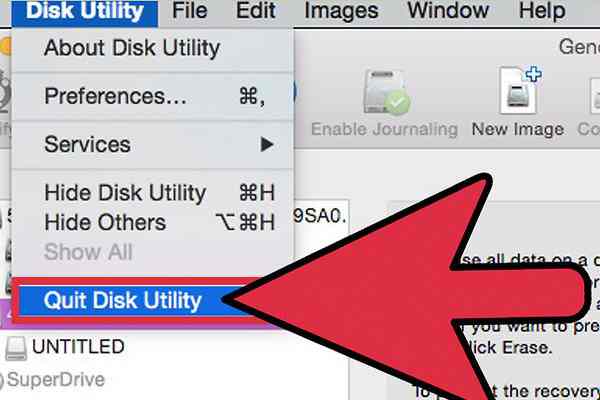That’s pretty much all you need to do, you should now be able to read Mac HFS formatted storage drives on a Windows PC. How to Format a Mac Formatted Drive from Windows. If you’re not concerned about losing the data or contents of the drive and just want to use it with Windows, you can easily format the drive to a Windows-supported format. How to read Mac OS Extended (Journaled) on Windows 10 Open Before selling my MacBook Pro, I moved 310 GB of data onto an external drive, not realizing it would go in the Mac OS Extended (Journaled) format. I’m formatting a 16Gb thumb drive to use with both Mac and Windows. I know the format needs to be exFAT, but what about the scheme—Master Boot Record or Mac OS Extended (Journaled)? I’ve done this in Windows, which doesn’t offer scheme choices. I've seen Mac instructions for both schemes. The stand alone installer knows enough to run Disk Utilty and prep a drive, so you don’t need a formatted drive. When you run the installer it will detect the bare drive and offer to erase, format, partition and install the OS. Just boot up the installer and connect the new drive.
- Format Flash Drive Mac Os Extended Journaled In Windows 7
- Formatting A Flash Drive Mac
- Using Flash Drive On Mac
- Access Flash Drive On Mac
- Format Flash Drive Windows 10
A Mac will format a hard drive to HFS+ which Windows cannot see, both Mac and Windows can see a NTFS formatted drive. You will need to use a 3rd party HFS+ to NTFS conversion utility that will not result in data loss, Windows itself cannot do that - there are a few available on the Web for free.
These instructions apply only to Mac computers with an Intel processor.
Erasing your Mac permanently deletes all of its files, so make sure that you make a backup of any files that you want to keep. If you're attempting to restore your Mac to factory settings, first learn what to do before you sell, give away, or trade in your Mac.
Start up from macOS Recovery
Turn on your Mac, then immediately press and hold these two keys until you see an Apple logo or other image: Command (⌘) and R. You may then be asked to select a user you know the password for. Select the user, then click Next and enter their administrator password.
Use Disk Utility to erase your disk
- From the utilities window in macOS Recovery, select Disk Utility and click Continue.
- Select Macintosh HD in the sidebar of Disk Utility. Don't see Macintosh HD?
- Click the Erase button in the toolbar, then enter the requested details:
- Name: Continue to use Macintosh HD as the name, or enter a different name.
- Format: Continue to use APFS or Mac OS Extended (Journaled), as recommended by Disk Utility.
- Click Erase Volume Group. If you don't see this button, click Erase instead.
- If Find My is turned on for this Mac, you may be asked to enter your Apple ID to authorize the erase. Forgot your Apple ID?
- After the erase is done, select any other internal volumes that may be listed in the sidebar, then click the delete volume (–) button in the toolbar to delete each volume.
You don't need to delete the Macintosh HD volume you just erased, or any external volumes or disk images. - Quit Disk Utility to return to the utilities window.
- If you want to start up again from the disk you erased, you should now reinstall macOS on that disk.
If you don’t see Macintosh HD in Disk Utility
Format Flash Drive Mac Os Extended Journaled In Windows 7
Your built-in startup disk should be the first item listed in the Disk Utility sidebar. It's named Macintosh HD, unless you changed its name. If you don't see it there, choose Apple menu > Shut Down, then unplug all nonessential devices from your Mac and try again.
If your disk still doesn't appear in Disk Utility, or Disk Utility reports that the erase process failed, your Mac might need service. If you need help, please contact Apple Support.
Learn more
For more information about using Disk Utility, see the Disk Utility User Guide.
Are you having trouble creating Mac OS Extended (Journaled) and APFS partitions using Disk Utility? If so, you can create a Mac OS Extended partition using GParted, then convert to APFS using Disk Utility.Disk Utility
Disk Utility is a disk utility on macOS operating system. It supports creating, splitting, merging, resizing, deleting and formatting partitions on the hard disk. Disk Utility only supports partition creation and formatting for Mac OS Extended (Journaled), exFAT, MS-DOS (FAT) and since MacOS High Sierra (10.13), it supports APFS.
If you are a Linux user or operating systems other than macOS, you probably use another tool. In another case, if you are using a Seagate, WD My Passport or any other hard drive that you previously partitioned with another tool. Disk Utility will report MediaKit reports not enough space on device for requested operation. This error occurs because the partitions created do not comply with Apple’s partition policy. In this case, you can use other tools instead of Disk Utility.
In this article, I will guide you to create a Mac OS Extended (Journaled) partition with GParted. If you want to install macOS High Sierra or later versions, just use the Convert to APFS feature on Disk Utility.
GParted

GParted is a well known disk partitioning program. It supports many partition formats such as FAT32, NTFS, exFAT, Ext4 and of course supports Mac OS Extended. We can use GParted to create Mac OS Extended partitions in just a few simple steps.
GParted comes pre-installed on many Linux distributions like Ubuntu, Debian, Linux Mint… If you already have GParted installed, just use it. If not, you can download GParted or 4MParted ISO files then integrate into AIO Boot. You should use these two operating systems, as they have pre-installed programs that support the format. If you use GParted on Ubuntu, Linux Mint or Debian, you need to install hfsprogs.
The format of Mac OS Extended is HFS+. There are some commercial softwares that support creating HFS + partitions on Windows, but GParted is free. Now we will create the HFS+ partition with GParted.
- Run GParted and select the hard disk in the dropdown list at the top right. My hard disk is /dev/sda.
- You can only create new partitions if your hard disk has unallocated space. Right-click on the unallocated space and select New. You can also format existing partitions to HFS+. Right-click the existing partition, select Format to, and then select hfs+. Or delete the existing partition to recreate it.
- Select hfs+ in the File system. Then select and enter some information for the other items you want.
- Click Add, then click Apply to apply the changes.

The Mac OS Extended partition created by GParted will not be journaled. However, we can use Disk Utility to Enable Journaling. Or use the following command to format Mac OS Extended to Mac OS Extended (Journaled):
Formatting A Flash Drive Mac
/dev/sdaX is the partition you want to format.
Using Flash Drive On Mac
Convert to APFS
From the MacOS High Sierra version, Apple announced a new file system called APFS. By default, macOS High Sierra can only be installed on an APFS partition. You can use Disk Utility to convert Mac OS Extended partitions to APFS without losing data.
If the Mac OS Extended partition is not Journaled, please journaled it first. Run Disk Utility, select the Mac OS Extended partition in the left column, then select File and select Enable Journaling.

Access Flash Drive On Mac
Now you can convert Mac OS Extended (Journaled) partitions to APFS without losing data. Just select Edit and select Convert to APFS…
Format Flash Drive Windows 10
By using GParted with the simple steps above, we can easily create Mac OS Extended (Journaled) partitions and many other formats that Disk Utility does not support. If you need to create macOS High Sierra bootable USB from Windows, you can try Clover Boot Disk. Good luck!
